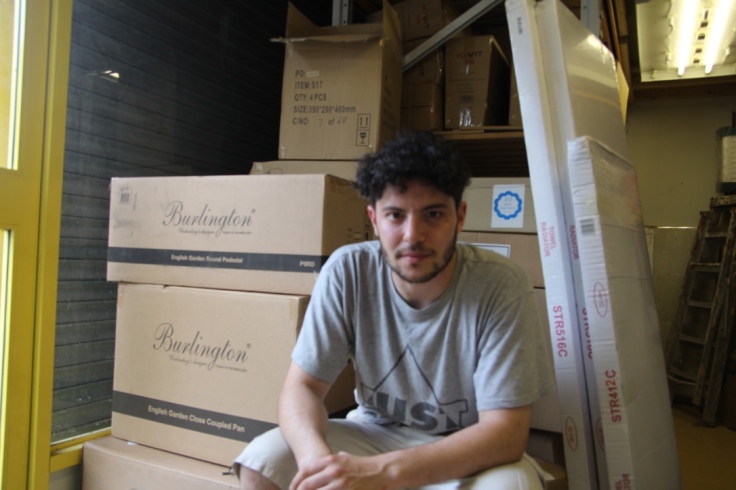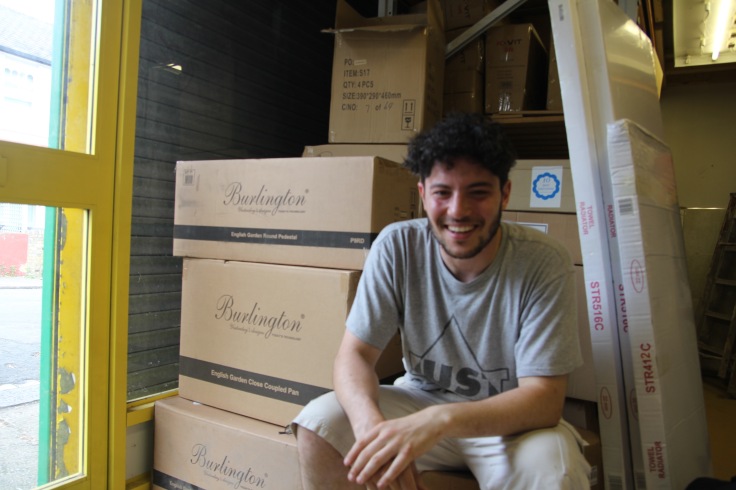Perched on a plastic toilet seat and closeted in the stockroom of his uncle’s hardware shop in North London, John Costi explains what it is like to be a white boy in a juvenile prison.
“Shit environment,” he says bluntly in a northern cockney accent.
“Things happened,” he shrugs and stares at the concrete floor. After a minute or two he looks up and frowns, “but that’s prison.” The humid stockroom suddenly felt chilled.
“I was on a wing with a gang called O trade- guys from Stockwell, South London, and I was like… a white North London boy. It was all right, in the end. I became established,” he says.
Costi began selling drugs at 13. He would have done “anything for money”. In 2007 he was charged with armed robbery and possession of a firearm. He was given six years in HM Feltham, known as the most “violent of them all” for kids aged 18-21.
In 2007 London witnessed a spike in youth murders. A total of 27 kids were stabbed and killed in London that year. The perpetrators ended up in Feltham.
Violent gang culture and rivalry from the streets moved inside. Locked up by Her Majesty’s Service, but still operating “Feltham was crazy at that time”- knifing, violent assaults and attacks were at an all time high.
Subsequently, Costi was ‘banged up’ for 23 hours a day. He had 45-minute association time- shower, phone calls and a quick smoke. He wasn’t allowed out of his cell to eat dinner. After being caught smuggling into prison he was put on closed visits and wasn’t allowed out even for a mere 45.
It was the sight of his mother’s grief stricken face after a bang up of nearly six months that became his “defining moment” for reformation.
Costi has always felt a deep connection to art, namely participatory based. Yet his environment wasn’t exactly forgiving. Raised on the streets and embraced by gang culture, an artist was never an accepted identity.
“Art is for rich kids,” his parents would say when he told them of his plans to attend the prestigious Central Saint Martins. A note of it still rings true.
Ironically, it was while being banged up in juvenile prison that the opportunity to paint presented itself. He signed up for art therapy classes, one-hour sessions per week on the healthcare wing. “A stroke of luck” followed when an external charity, the Kings Fund, requested to refurbish the place.

“It was fucked,” he says again, this time referring to the section of the prison that should have been a place of refuge and reprieve for the prisoners. “Gangs would try and be requested to the healthcare wing so they could meet up and fight each other,” he says. Evidently, a refurbishment and cleanup was desperately overdue.
He was asked to paint graffiti- an artistic expression accepted by the other prisoners as it wasn’t considered ‘soft’. However, once again Costi encountered trouble.
“Daily strip searches, sometimes six times a day. Split the cell searches,” because “a lot of the officers weren’t happy I was doing something positive.” Go figure.
After a few years in HM Feltham, Costi was transferred to an Open Prison. Open Prisons are an informal penal establishment and allow prisoners to engage in work and tertiary education outside of the penal premises. He was no longer T08 808 Costi-R14, it was the first time in years that he had been “trusted” and “treated with humanity.” While in Open prison Costi taught art classes to autistic and Down syndrome adults. He also received a distinction in Fine Art at the Chelsea and Kensington School.
In September 2010 he started classes at the prestigious and acclaimed Saint Martins.
This marks “a new chapter” for Costi. A chapter, where he receives first class honours at Saint Martins, and a family that begins to recognise and understand their son’s talents. Yet, those six years bound behind concrete walls has never left him. In fact, it defines his identity as an artist. At the time of our interview he has just completed ‘Johnny’s Work’, a series of artworks based around his identity and experience.
Explicitly, the participatory based art collection is a “conscious rebranding” to desist Costi from reoffending. “I didn’t want to be known as Oreo anymore,” he says. ‘Oreo’ refers to a person who attempts to emulate or please white people.
I ask him why participatory based art. Simply, he wants the audience to “take away something from the experience.”
“I’m in it to learn,” he says. “I think art should be about an exchange.”
Truly, his art is very difficult to commodify. His stubborn rebuke of commerciality keeps him “poor”. Even Damien Hirst and Tracey Emin, artists who rely on experience and participation rather than simply packaging their art to collections, still maintain an edge of commerciality. But then again, they never spent time banged up, an experience that defines John Costi the artist and an experience he refuses to take commercial.

Regardless, he is quickly developing a reputation as a successful immersive artist. He runs the gallery Light Eye Mind in North London, has a couple of shows coming up in Brixton, and last year featured at Tate Modern. He has even collaborated with Whoa Now Gallery in Copenhagen.
“I always knew I wanted to be an artist,” he tells me. “I just never thought it would be.”
This is a good time for Costi to emerge as an underground participatory artist. Conventional landscapes and renaissance art is not considered so fashionable. Audiences want art that pushes and tugs and completely bowels them over. We want immersion, not one dimensionality.
Costi is optimistic about his future, “its coming,” he says referring to success, fame and fortune. He certainly has the stories to tell, he just needs the right kind of audience to pay attention and endorse him.
Truthfully, Costi is a rough canvas- scars show a life of street brutality and gang violence. Puncture holes in his forearms, the physical souvenir of a drug mule, and a few DIY tattoo jobs mark his wrists. He even shows me another tattoo, one that you can’t get on the outside. Two L’s intertwined mark his rib cage. They don’t look like tattoos; the reason for is because it isn’t. Love and Life- boot polish for ink, and a nail gun (minus the nail) for puncturing the skin.
While the story of ‘rough boy comes good’ is overused in all forms of art, film and media, this one has a slightly different twist. This is a rough boy, comes good but is fighting everyday to ensure he doesn’t resort back to the streets. His art is a physical testament, a cry and plea for help from his audience: ‘let me share, experience and hold me back from that life’. I met him in his area in North London; the streets were decorated with gangs of youths just ‘hanging about’. Costi and I both know how easy it would be for him to go back. But art is one way of “looking in” on himself, holding him accountable and sharing the gritty details of a life marred by youth violence and incarceration. His work is his identity, and considering the surge in knife violence in 2016 it would be beneficial for all to take a look at Costi’s work.
“Art saved my life,” Costi says simply. There is no façade, no simulated vulnerability. Exposure and immersive art is raw and incredibly profound. John Costi, prisoner T08 808 Costi-R14 is its greatest testament.
Multimedia Piece

Costi reveals an institution tainted by violence, corruption and drug abuse. For him, “art saved’ his life. He is now a successful participatory-based artist with two upcoming shows in Brixton.

Leave a comment